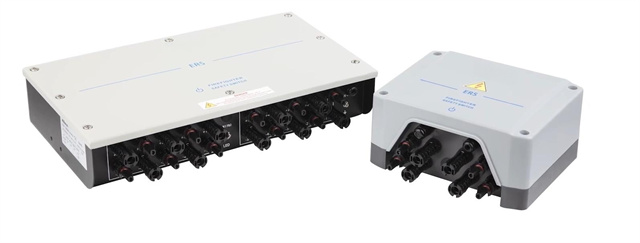Author:BLD Solar Energy SystemFROM:Solar System Converter Manufacturer TIME:2023-10-26
Solar energy is a valuable and sustainable source of power that is rapidly gaining popularity. As the world becomes more environmentally conscious, solar systems are increasing in number and becoming an essential part of our energy mix. However, rapid shutdown is an important feature of solar systems that is often overlooked, but can significantly enhance their safety and efficiency. In this article, we will discuss the benefits of effective utilization of rapid shutdown for solar systems.

Rapid shutdown (RSD) is a safety feature for photovoltaic (PV) systems that enables quick disconnection of the DC circuit in case of an emergency. Rapid shutdown devices ensure that in case of an emergency, such as a fire, first responders can quickly de-energize the system and prevent electrocution. RSD is an essential feature that enhances the safety of PV systems and protects both people and property.

Effective utilization of RSD enhances the safety and efficiency of solar systems. When installed correctly, RSD devices allow installers to quickly disconnect the DC circuit, which protects people and property. Additionally, effective usage of RSD can help solar systems achieve a higher level of performance by allowing for more flexible designs. Effective utilization of RSD is critical for both homeowners, businesses and first responders who may need to access solar equipment.

RSD devices are available in various types, each designed to serve a specific purpose. For instance, there are module-level RSD devices such as micro-inverters and power optimizers that provide shutdown capabilities at the panel level. There are also string-level RSD devices that shut down groups of panels connected in a series. Lastly, there are also system-level RSD devices that shut down the entire PV system.
In the United States, the National Electrical Code (NEC) requires that solar systems have rapid shutdown capabilities. Specifically, the NEC requires that solar systems have RSD capabilities that allow for a power shut off within 1 second after activation of the shutdown switch or button. Compliance with these codes is critical to ensuring the safety and efficiency of solar systems.
Despite the benefits of RSD, there are challenges associated with its installation and utilization. One of the main challenges is cost, as RSD devices can be expensive. Additionally, there are logistical challenges associated with installation and maintenance. For instance, some RSD devices may require specialized tools and equipment to install and maintain, which can add to their overall cost.
To maximize the benefits of RSD, it is essential to choose the right type of device for the specific PV system. It is also crucial to ensure that the device is correctly installed, maintained, and tested regularly to ensure that it is functioning properly. Regular testing is essential to ensuring that first responders can confidently use RSD devices in an emergency.
The demand for more efficient and cost-effective RSD devices has led to innovation in this field. One area of development is the integration of RSD devices into smart inverters. Smart inverters can communicate with the utility grid and automatically shut down the PV system in case of a fault or emergency. Additionally, new battery storage systems may incorporate RSD features to provide enhanced safety and functionality.
Rapid shutdown is a critical feature that enhances the safety and efficiency of solar systems. Effective utilization of RSD devices can protect people and property, enhance system performance, and ensure compliance with code requirements. Despite challenges associated with its installation and maintenance, RSD is an essential component of solar systems. Its ongoing development ensures that solar systems will continue to become safer, more efficient, and cost-effective in the future.
